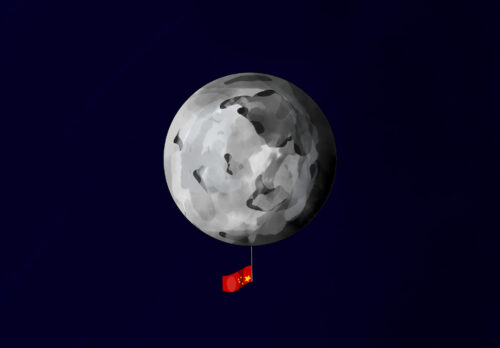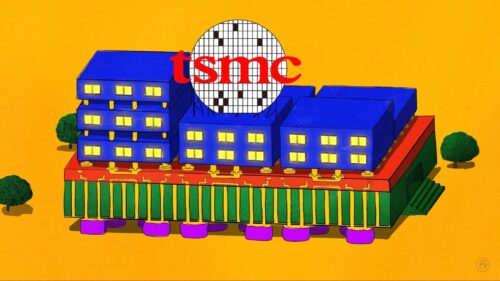China now has a lot more batteries than electric vehicles
China is still producing the world’s best batteries, but a glut of low-quality EV batteries is crowding out more advanced tech.

China’s sales of new energy passenger vehicles (NEVs) in May rose 10.5% from April, but NEV sales have slowed overall in recent months, leaving domestic battery makers with a stockpile of batteries and no vehicles to put them in.
The May fleet of new NEVs on China’s roads was 580,000 strong, representing sales 60.9% above May 2022. This included full electric vehicles (EVs), hybrids, and cars running on hydrogen and other non-gasoline power. By comparison, only 320,000 EVs were sold in the United States from January through the end of March.
As impressive as China’s EV sales growth has been, passenger EV sales in January and April declined month-on-month by 48% and 3.6%, respectively, while battery production capacity has continued to expand prodigiously.
As China’s EV battery industry has reached and surpassed self-sufficiency, it is now entering a period of fierce competition. With the battery glut in China, some companies are choosing to expand overseas, localizing their production to adhere to stricter emission standards in the U.S. and Europe.
Short of taking their batteries abroad, Chinese EV battery makers now face having to distinguish themselves with technological innovation, developing the most advanced batteries such as solid-state and sodium-ion.
China news, weekly.
Sign up for The China Project’s weekly newsletter, our free roundup of the most important China stories.
Bad battery glut
Three giants dominate China’s EV battery industry. CATL, headquartered in Fujian Province and listed in Shenzhen, enjoys a 40% market share. BYD, headquartered in Guangdong Province and listed in Shenzhen and Hong Kong, has about 30%. The third player, CALB, spun off from a state-owned defense company in 2009 and listed in Hong Kong in October 2022, holds about 10%. The balance of the battery market is shared by a raft of second-tier competitors.
In 2022, a battery shortage suddenly turned into an oversupply when battery makers produced more than the EV makers could absorb. According to the China Alliance for Electric Vehicles (CAEV), China produced batteries equivalent to 545.9 gigawatt-hours (GWh) of power, but only 294.6 GWh were installed in EVs. And the imbalance between battery supply and demand has continued into 2023, with 233.5 GWh produced from January through May, while only 119.2 GWh were installed in EVs.
The battery glut is partly due to softening EV sales, but also due to a headlong rush into battery production. From the start of 2022, more than 50 Chinese battery companies announced capacity expansions of almost $200 billion that would produce enough batteries for 30 million EVs. But in 2023, China’s EV sales are projected to be fewer than 10 million units.
Lithium-ion batteries are the workhorses of the global EV industry, accounting for up to 99% of the batteries installed in EVs as well as hybrids. These batteries currently come in two main configurations, depending on which cathode materials are used: NMC batteries use lithium, manganese, and cobalt oxide, while LFP batteries use lithium, iron, and phosphates. The efficiency of a battery is expressed in energy density and measured in watt-hours per kilogram (Wh/kg); conventional lithium-ion batteries currently have an energy density of under 300 Wh/kg.
Yet as of May 2023, the vast majority of the batteries in China — around 75% — have an energy density well below this threshold, less than 160 Wh/kg, as per CAEV data. More powerful batteries whose energy density is above 160 Wh/kg account for only 18.1% of all batteries in China, and this proportion has dropped significantly from 31.6% in May 2022.
With the rush to make EV batteries to meet hoped-for EV growth, the quality of China’s battery supply has been diluted.
Batteries that can power aircraft
Nevertheless, while the proportion of higher-quality batteries has dropped significantly in just one year, China still produces the world’s most advanced batteries.
In April, CATL said its new lithium-ion Condensed Battery (凝聚态) will have an energy density as high as 500 Wh/kg and be able to power an EV as far as 932 miles (1,500 kilometers) on a single charge. Mass production of the Condensed Battery, which the company said also can power aircraft, is set to begin in 2023.
CATL Chief Scientist Wú Kǎi 吴凯 stated at the launch event that the Condensed Battery is a semi-solid-state battery. This is an intermediate technology of solid-state batteries, which use solid ceramic material instead of liquid electrolytes, making them lighter, faster to charge, and cheaper, with a manufacturing carbon footprint 24% smaller than lithium-ion batteries. Although solid-state batteries use up to 35% more lithium than lithium-ion batteries, they use far less polluting graphite and cobalt.
“Solid-state batteries will not get into mass scale production at least into the 2030s,” Lei Xing (邢磊 Xíng Lěi), a veteran car market analyst, told The China Project. He added, “China will always be faster than the rest of the world in commercializing these alternatives and actually putting them into vehicles.”
Though it may be a decade before solid-state batteries become a regular feature of the EV industry, CATL is not the only Chinese company working on the technology.
On May 19, Ganfeng Lithium, the world’s largest lithium producer, started to mass-produce its first-generation solid-state battery. In December 2021, the company first unveiled the battery with an energy density of 260 Wh/kg; a second-generation successor will reach 400 Wh/kg.
Also on May 19, Gotion High-tech launched the L600 Astroinno (启晨) lithium iron phosphate (LFP) battery. With an energy density of 240 Wh/kg and a battery life of more than 621 miles (1,000 kilometers), this semi-solid-state battery is expected to start mass production in 2024.
In August 2022, Svolt announced the launch of solid-state battery cells that use sulfide-based electrolytes and that will have an energy density of 350-400 Wh/kg.
Other companies currently working on solid-state batteries include WeLion New Energy Technology, which has an agreement in place to supply batteries to NIO, and Qingtao Development, which signed an agreement of 2.7 billion yuan ($378.47 million) in May 2023 with SAIC for the mass production of solid-state batteries by 2025.
Sodium-ion batteries — that use sodium ions to store energy and do not require any lithium, cobalt, nickel, or manganese — have been the subject of a lot of hype ever since CATL announced its first generation of such batteries in July 2021. The company planned to have an industrial chain for mass production of such batteries in place by 2023, by which time the batteries were planned to have attained an energy density in excess of 200 Wh/kg. But their energy density is still inferior to lithium-ion batteries, so they can only be used in small vehicles operating over short distances. So far, sodium-ion batteries have only been fitted in small EVs, including models by Sehol and Chery’s iCAR brand.
Progress with the sodium-ion battery has not yet lived up to expectations, as Lei Xing reported from this year’s Shanghai auto show, where he sought out a report from CATL engineers. “The engineer I talked to did confirm standard operating procedures before the end of the year but stressed that it’ll take some time to cultivate the supply chain, especially the upstream raw materials,” Lei said.
The CATL engineer also told Lei that production quantities for the iCAR will “not be that big, which, again, is affected by the supply chain.”
On June 12, CATL competitor BYD said it is launching a new joint venture to mass-produce sodium-ion batteries for small EVs.
China accounted for 64% of global EV production, or 6.7 million units, in 2022, and also accounted for 59% of the 10.52 million EVs sold worldwide. China is leading the world in replacing its fleet of vehicles burning fossil fuels. Of the 1.74 million passenger vehicles sold in China in May, 33.3% of them were EVs, up from 26.6% in May 2022. Only 20% of Europe’s new car sales in 2022 were EVs. In the United States in 2022, EV sales made up 9% or fewer of all new car sales.
Companies:
- CATL
- BYD
- CALB
- NIO
- Gotion High-tech
- SAIC
- Ganfeng Lithium
- WeLion New Energy Technology 卫蓝新能源
- Qingtao Development 清陶能源
- Sehol 思皓
- Chery
Links and sources:
- Global electric car sales’ ‘explosive growth’ / Electrek
- China NEV retail up 10.5% MoM to 580,000 in May, CPCA data show / CnEVPost
- China EV battery installations in May: BYD extends lead in LFP market / CnEVPost
- 产能过剩后,动力电池赛道即将进入“大逃杀”? / TMT Post
- 《中国动力电池行业投资发展报告》发布:5800亿融资背后,锂电池称王,新兴技术正在冒头 / 36kr
- China’s EV market to see slower growth in 2023 as consumers hold off on big-ticket purchases / SCMP
- 中国动力电池产业延续高速增长态势 在全球指数中发展优势明显 / CNR
- 加油般的补能体验,巨湾技研推出极速8C“凤凰电池” / Leiphone
- China’s Phoenix EV battery promises an eight-minute charge for a 600-mile drive / The China Project
- CATL’s new battery is a leap forward but also a precursor of something radical to come / The China Project
- 宁德时代“狂飙”,1000公里续航竞赛揭幕,颠覆燃油车的拐点来了? / OFweek
- 动力电池巨头上海车展“亮剑”:宁德时代发布凝聚态电池 能量密度达500Wh/kg / Sina
- CATL launches condensed battery with an energy density of up to 500 Wh/kg, enables electrification of passenger aircrafts / CATL
- Supercharged China: Cars, Batteries, and Lithium / The China Story
- Could Chinese companies produce revolutionary solid state batteries by 2024? / The China Project
- Svolt Successfully Develops Solid State Cell with Sulfide-Based Electrolyte / Batteries News
- 上汽加码固态电池,电池行业“锂、钠、固”三分天下格局将定 / 36Kr
- Ganfeng Lithium has announced mass production of solid-state batteries / The China Project
- 三大汽车巨头追逐固态电池超级独角兽 / 36kr
- The sodium battery era is coming soon / The China Project
- Is CATL’s sodium-ion battery ready for prime time? / EVsmartBlog
- CATL Unveils Its Latest Breakthrough Technology by Releasing Its First Generation of Sodium-ion Batteries / CATL
- 钠电池车首亮相!钠电池能革锂电池的命吗? / Gelonghui
- Gotion unveils new battery based on LMFP chemistry with range up to 1,000 km / CnEVPost
- BYD establishes joint venture to begin mass producing its nascent sodium-ion EV batteries / Electrek






